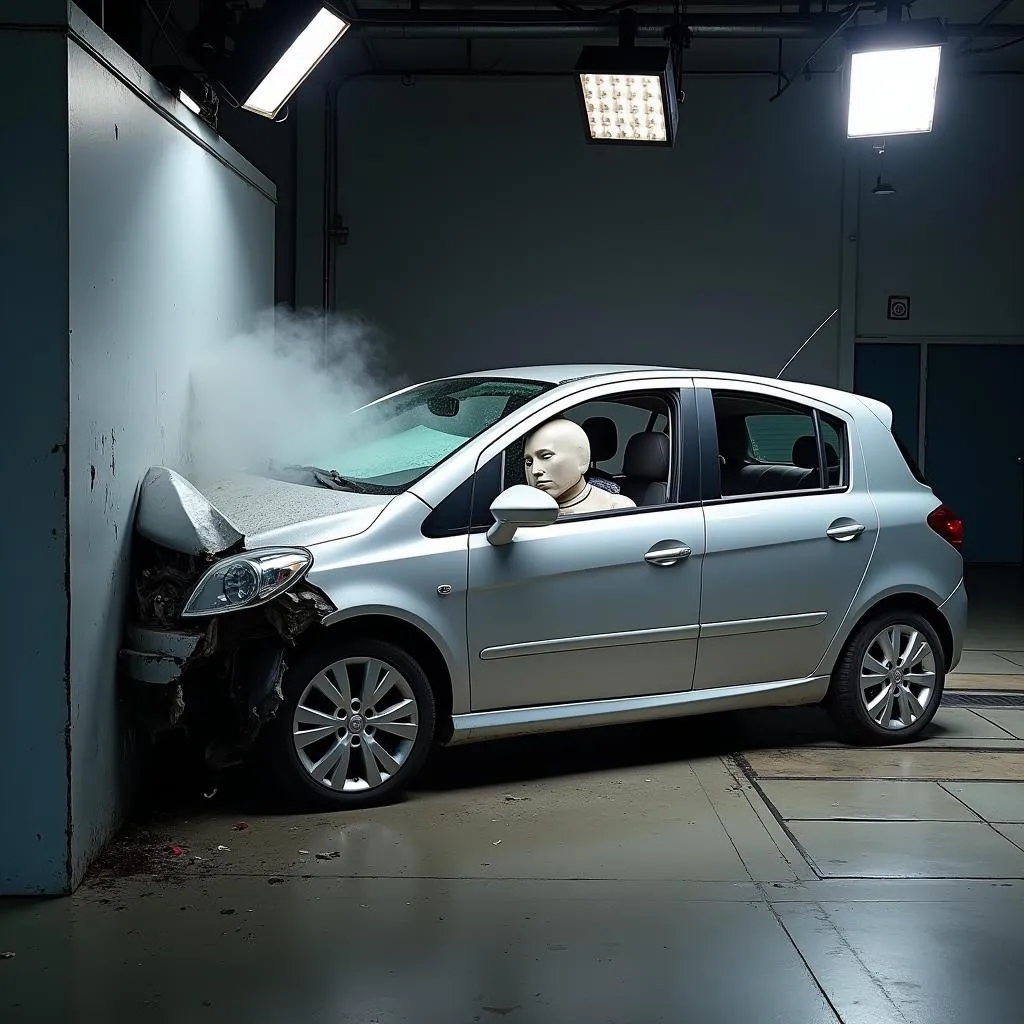A car accident, even at seemingly low speeds like 60 km/h (approximately 37 mph), can have serious consequences. But what does “an accident at 60 km/h” actually mean? In this article, we explore the physics behind the impact and show you why even seemingly harmless accidents can lead to significant damage.
The Physics Behind the Impact
“An accident at 60 km/h is equivalent to” falling from the third floor, according to a common rule of thumb. But why is this the case? Imagine your vehicle colliding with a stationary obstacle at 60 km/h. At that moment, all the kinetic energy of the vehicle is abruptly dissipated. This energy acts on the vehicle and its occupants, leading to a strong deceleration – the so-called acceleration force.
The Force of Deceleration
The deceleration force acting on the human body during an impact is measured in units of “g”. 1 g corresponds to the Earth’s gravitational acceleration, which we constantly feel. In an accident at 60 km/h, forces of over 20 g can briefly act on the body. For comparison, fighter pilots are usually exposed to forces of up to 9 g for short periods.
 Car crash impact at 60 km/h
Car crash impact at 60 km/h
Factors Influencing the Impact Force
The actual force of the impact and the acting forces depend on various factors, including:
- Speed: The higher the speed at impact, the greater the energy released and the stronger the acceleration forces.
- Vehicle Mass: A heavier vehicle has higher kinetic energy at the same speed, resulting in a stronger impact.
- Type of Impact: A frontal impact has a different effect than a side impact or a rear-end collision.
- Vehicle Deformation: The crumple zone of a vehicle is designed to absorb impact energy and thus protect the occupants.
Consequences of an Accident at 60 km/h
The consequences of an accident at 60 km/h can be varied and range from minor injuries to severe trauma:
- Whiplash: The sudden jolt of the head during an impact can injure ligaments, muscles, and nerves in the neck area.
- Bruises and Contusions: Internal organs can be bruised or crushed by the strong forces.
- Bone Fractures: Rib fractures, arm fractures, or leg fractures are not uncommon in accidents at 60 km/h.
- Traumatic Brain Injury: Impact to the head can cause concussion or severe traumatic brain injuries.
 Importance of seatbelt and airbag for car safety
Importance of seatbelt and airbag for car safety
Do Not Underestimate Long-Term Consequences
In addition to immediate injuries, accidents can also have long-term consequences for those affected. Chronic pain, restricted mobility, or psychological burdens such as anxiety or post-traumatic stress disorder are just a few examples.
Importance for Accident Prevention
Understanding the physical relationships of an impact is crucial for accident prevention. Car drivers should be aware of the dangers that exist even at seemingly low speeds and adjust their driving behavior accordingly:
- Adjust Speed: Adhere to speed limits and adjust your speed to weather and road conditions.
- Maintain Safe Distance: Keeping a sufficient safety distance from the vehicle in front is essential to avoid rear-end collisions.
- Avoid Distractions: Concentrate solely on traffic while driving and avoid distractions such as smartphones or loud music.
Conclusion: Prevention is Better Than Cure
An accident at 60 km/h can have more serious consequences than many people assume. Knowledge of the physical forces acting in an impact and the potential injuries should sensitize drivers to responsible driving behavior. Remember: Prevention is better than cure!
Do you have questions about accidents or need support with vehicle repairs?
Contact us! Our experts at AutoRepairAid are happy to help you with advice and assistance.
